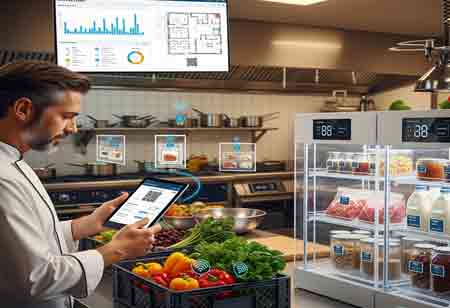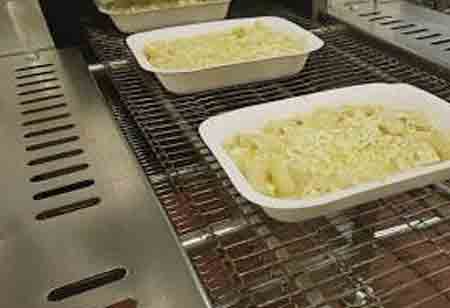THANK YOU FOR SUBSCRIBING
Be first to read the latest tech news, Industry Leader's Insights, and CIO interviews of medium and large enterprises exclusively from Food and Beverage Tech Review
The Significance and Goals of Food Safety Testing: A Comprehensive Overview
Every organization in the food sector is asked to maintain food safety as part of the human right to adequate nutrition

By
Food and Beverages Tech Review | Saturday, December 02, 2023
Stay ahead of the industry with exclusive feature stories on the top companies, expert insights and the latest news delivered straight to your inbox. Subscribe today.
Specific food safety testing processes are employed to identify these risks. Food firms ensure and confirm that their products are free from food dangers that can impair public health using these scientific procedures.
Fremont, CA: No one can live without proper nourishment, which signifies how crucial having access to healthy food is. The only way for average customers to determine whether a product is safe is through sensory or physical examination. How, then, can they determine whether the food they are consuming is safe? At this time, food businesses play a crucial role in guaranteeing food safety. Every organization in the food sector is asked to maintain food safety as part of the human right to adequate nutrition.
The Significance of Food Safety Testing
The first thing that comes to mind when we discuss any foodborne illness is infected by illness-causing microorganisms such as viruses, parasites, bacteria, and molds. In actuality, both physical and chemical contaminants have the potential to cause foodborne illnesses or related damage.
Specific food safety testing processes are employed to identify these risks. Food firms ensure and confirm that their products are free from food dangers that can impair public health using these scientific procedures. Programs for assessing food safety are another component of the solution for achieving international consistency in food security and safety, as well as for addressing the enormous global demand for safe food. Along with other difficulties related to foodborne illnesses, food loss and production of dangerous food are reduced with adequate food safety testing and quality assurance.
Goals of Food Safety Testing:
Analyzing food products to monitor their safety for eating is the primary purpose of food safety testing. Food companies' claims that their operations adhere to food safety standards and that they comply with all relevant laws and regulations are supported by tests. These procedures are vital to ensure food quality and the finest, safest possible eating experience. The specifications for doing food safety tests highlight how crucial food safety is.
Every food-based business is asked to conduct specific food safety testing, and they are also required to have a food testing lab to accomplish particular goals. Those goals include:
Safety and Prevention from Diseases:
As already mentioned, food safety tests assess the safety of food products. Additional tests can be used to support procedures for determining whether the food was cooked to the proper doneness. Such testing can be carried out by obtaining samples from the processed batch or a food ingredient and evaluating them for the presence of the desired microorganisms. The outcomes of these analyses can be utilized to decide whether or not to safely release products onto the market.
Customer Awareness:
The instance of genetically modified foods (GMOs) may be the best illustration of how food safety testing serves as a means of educating regular consumers. The Food and Drug Administration (FDA) has mentioned that all genetically modified food products need special safety testing and food safety testing laboratories as a response to consumers' ongoing worries about GMOs. Newly created consumer items can be adequately tested for food safety before being released on the market, minimizing customer exposure and maintaining product safety. To guarantee accuracy, results from these evaluations are frequently peer-reviewed.
Sustainability:
The solution to sustainability and the rising food demand includes scientific methods for verifying food safety. Losses are minimized, and consistent food production can meet the increasing demand for food by guaranteeing that the produced foods are safe. The complementary qualities of food safety and security must be strongly stressed if we are to attain a sustainable future.
I agree We use cookies on this website to enhance your user experience. By clicking any link on this page you are giving your consent for us to set cookies. More info






